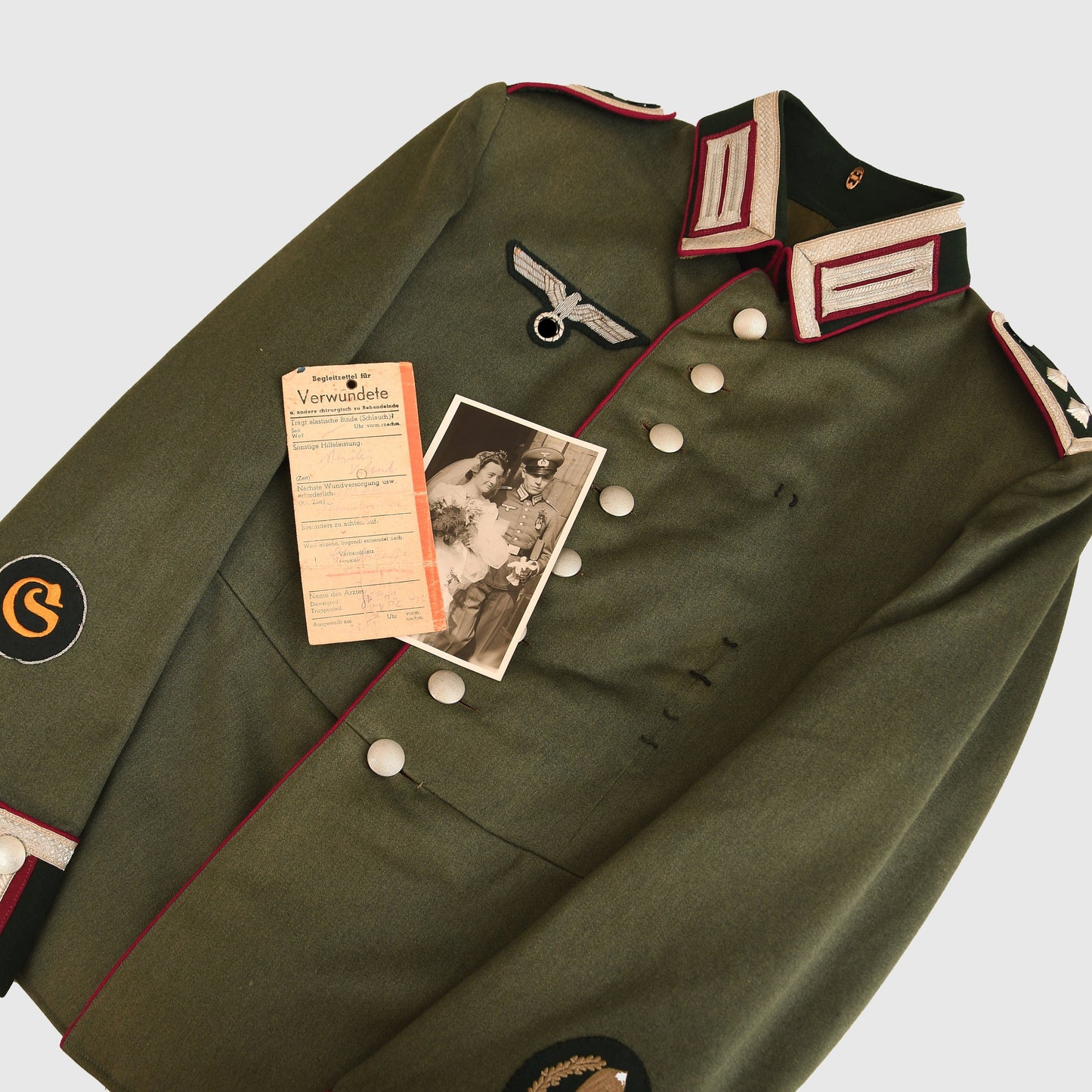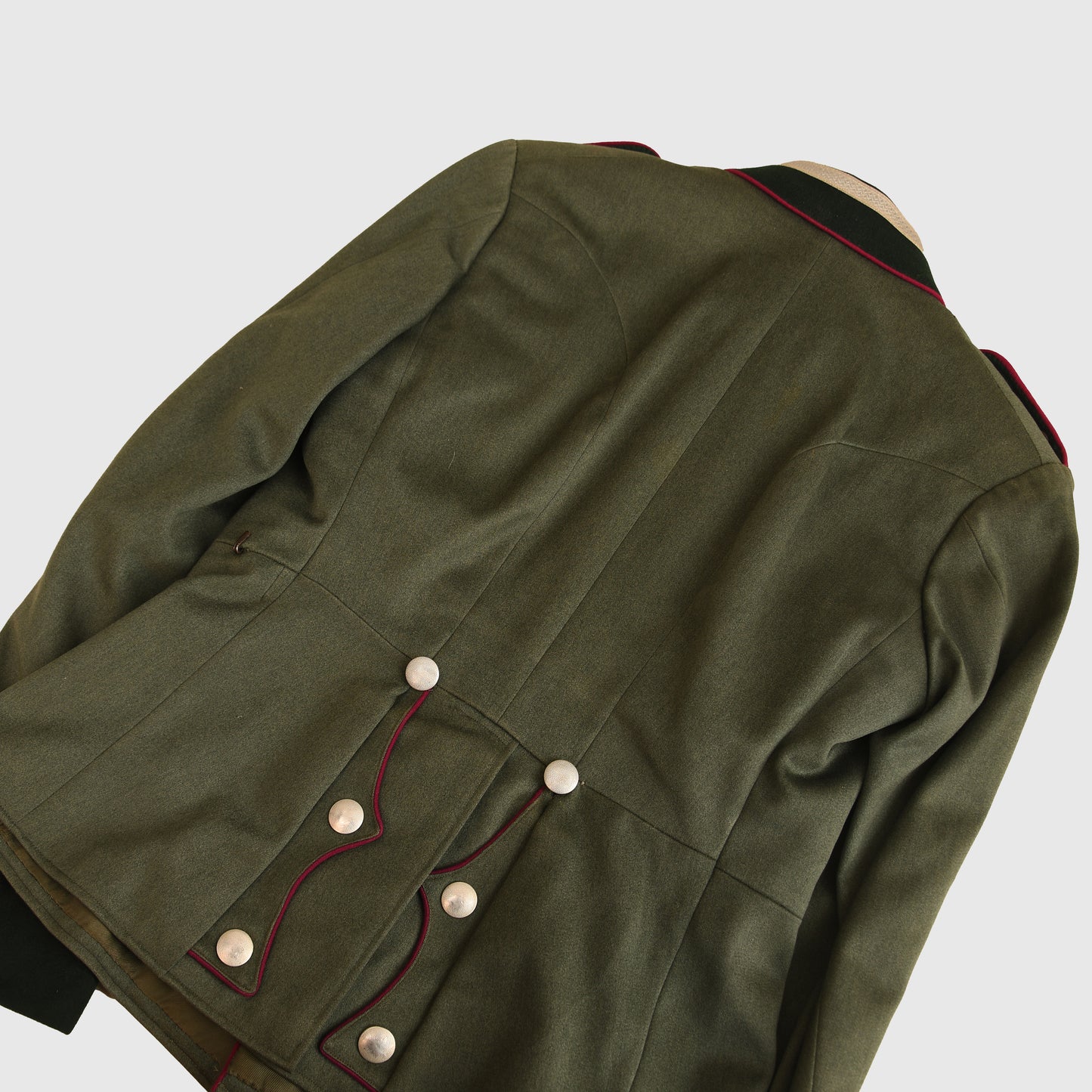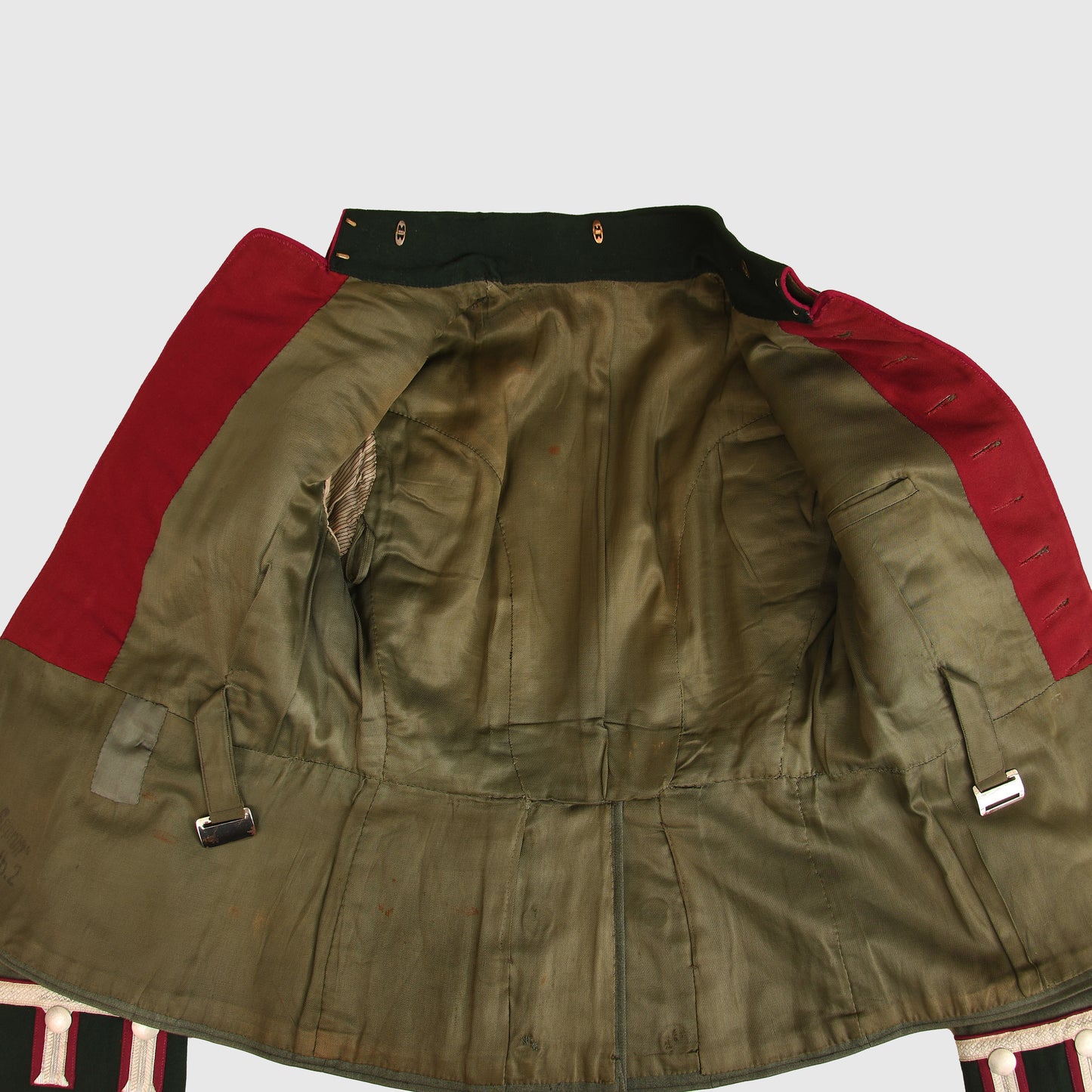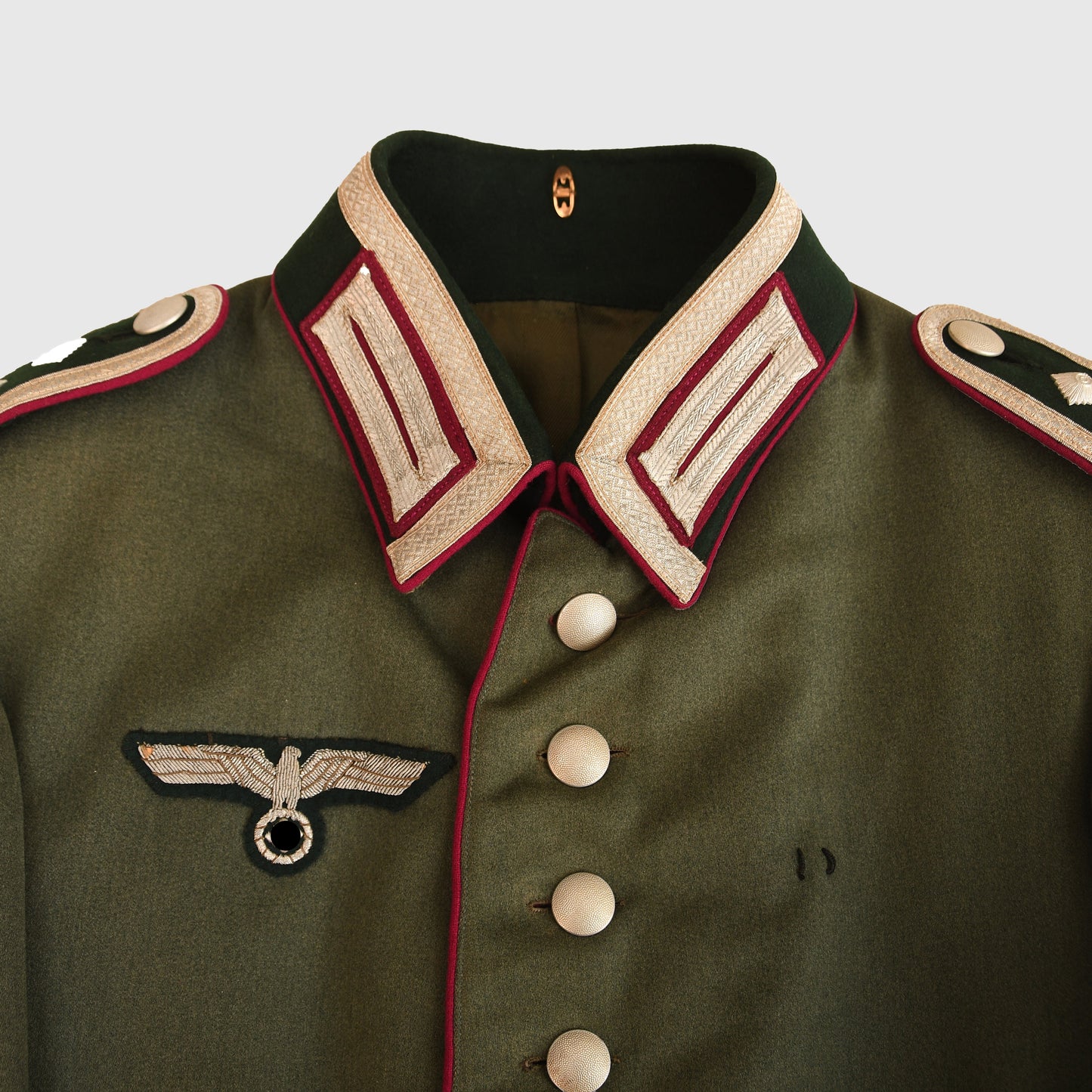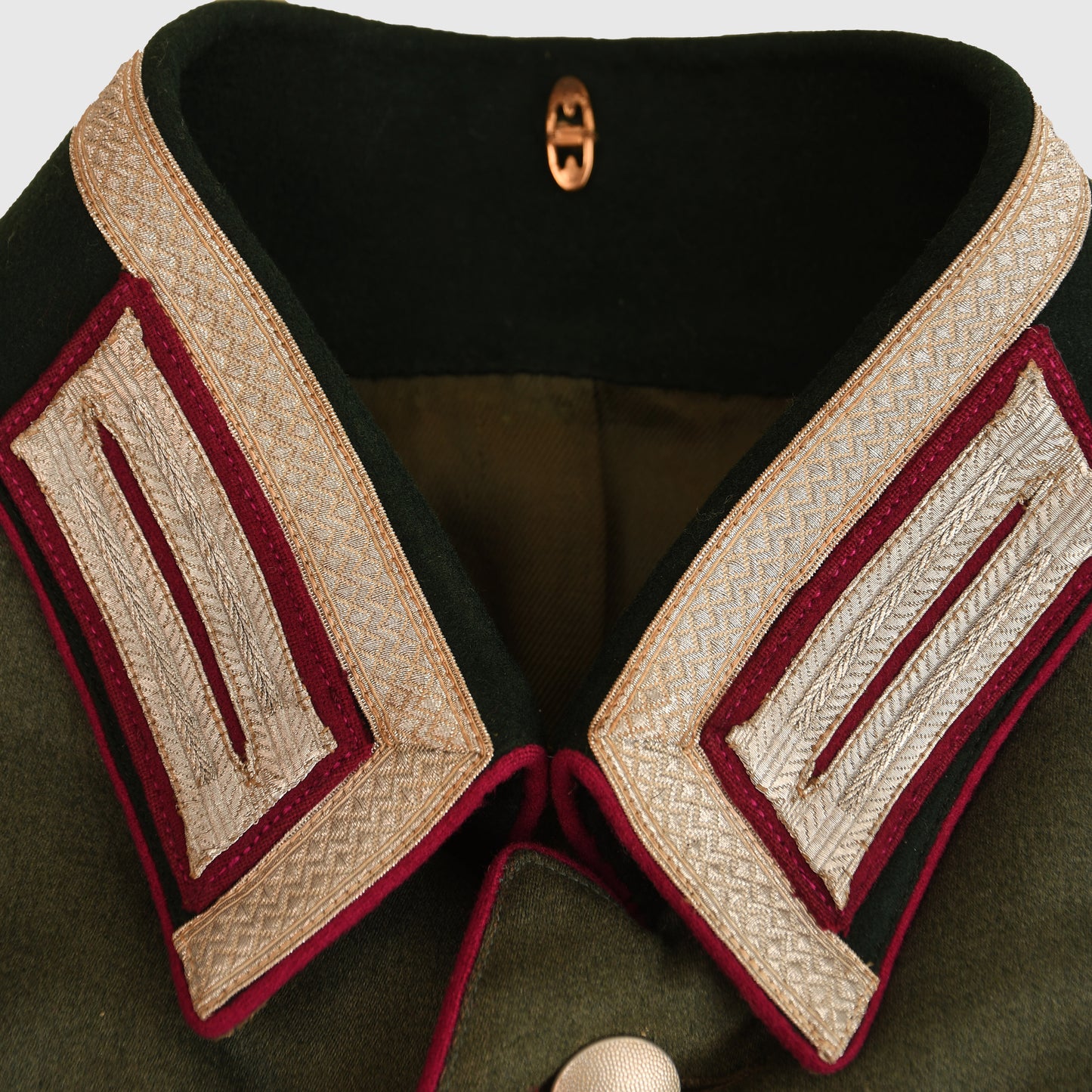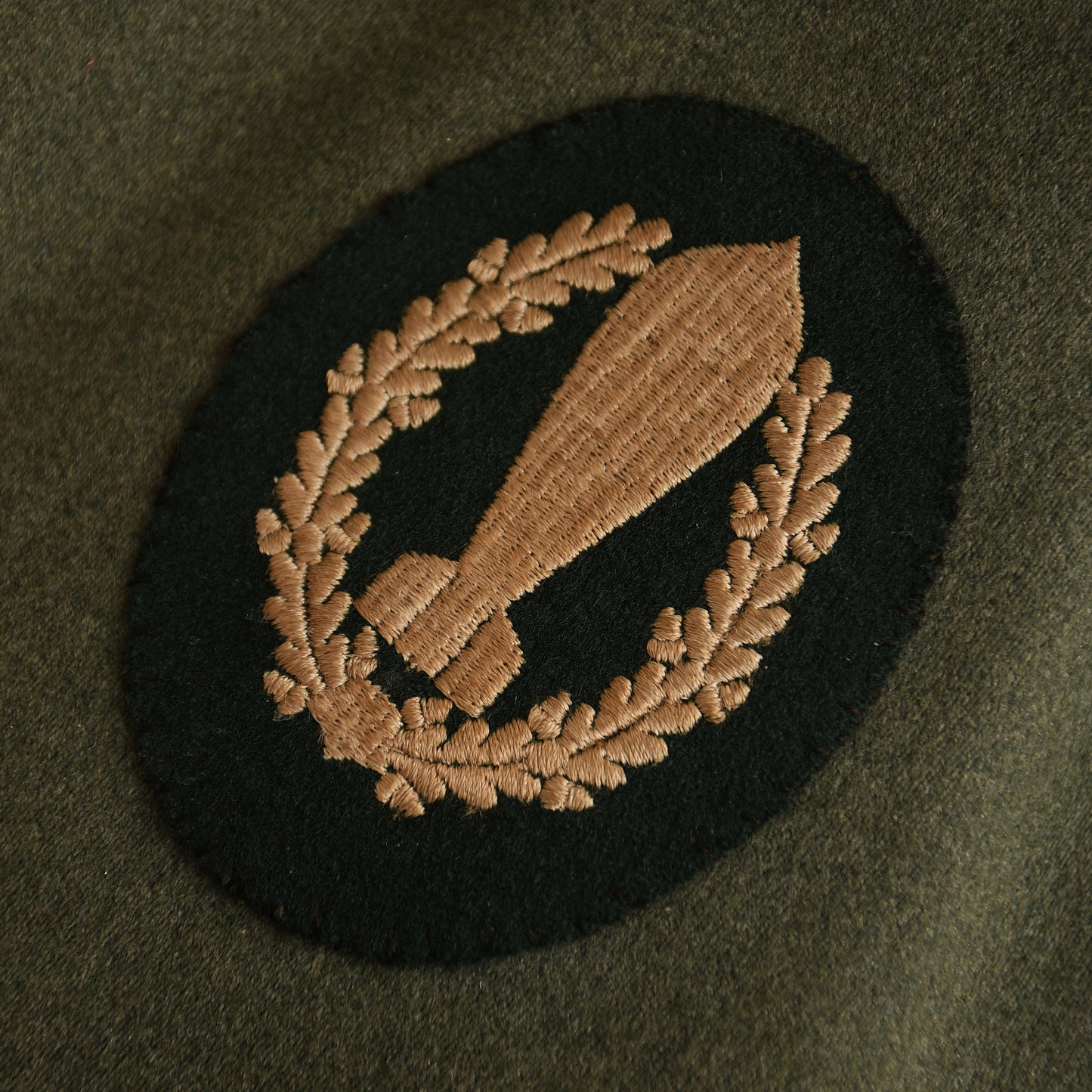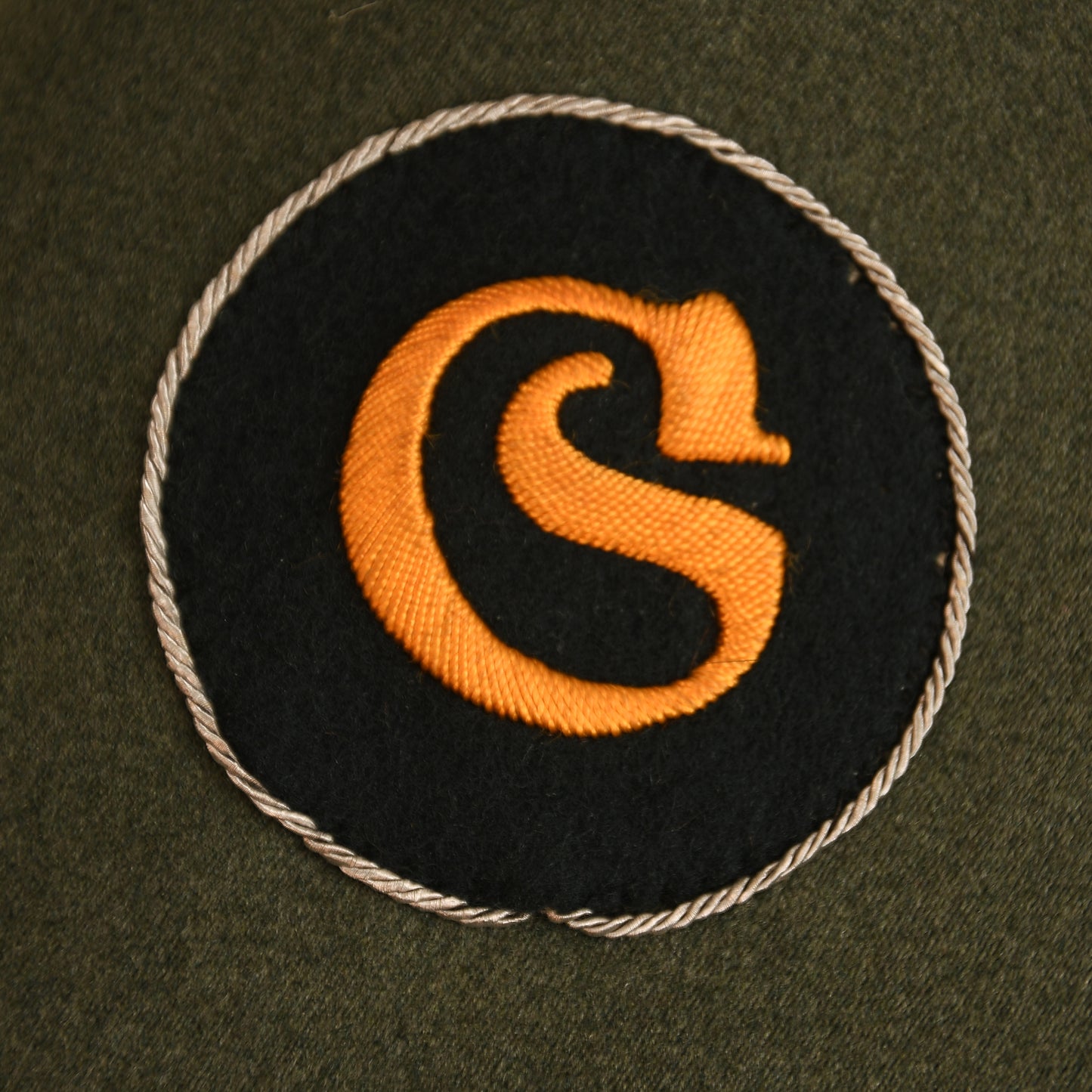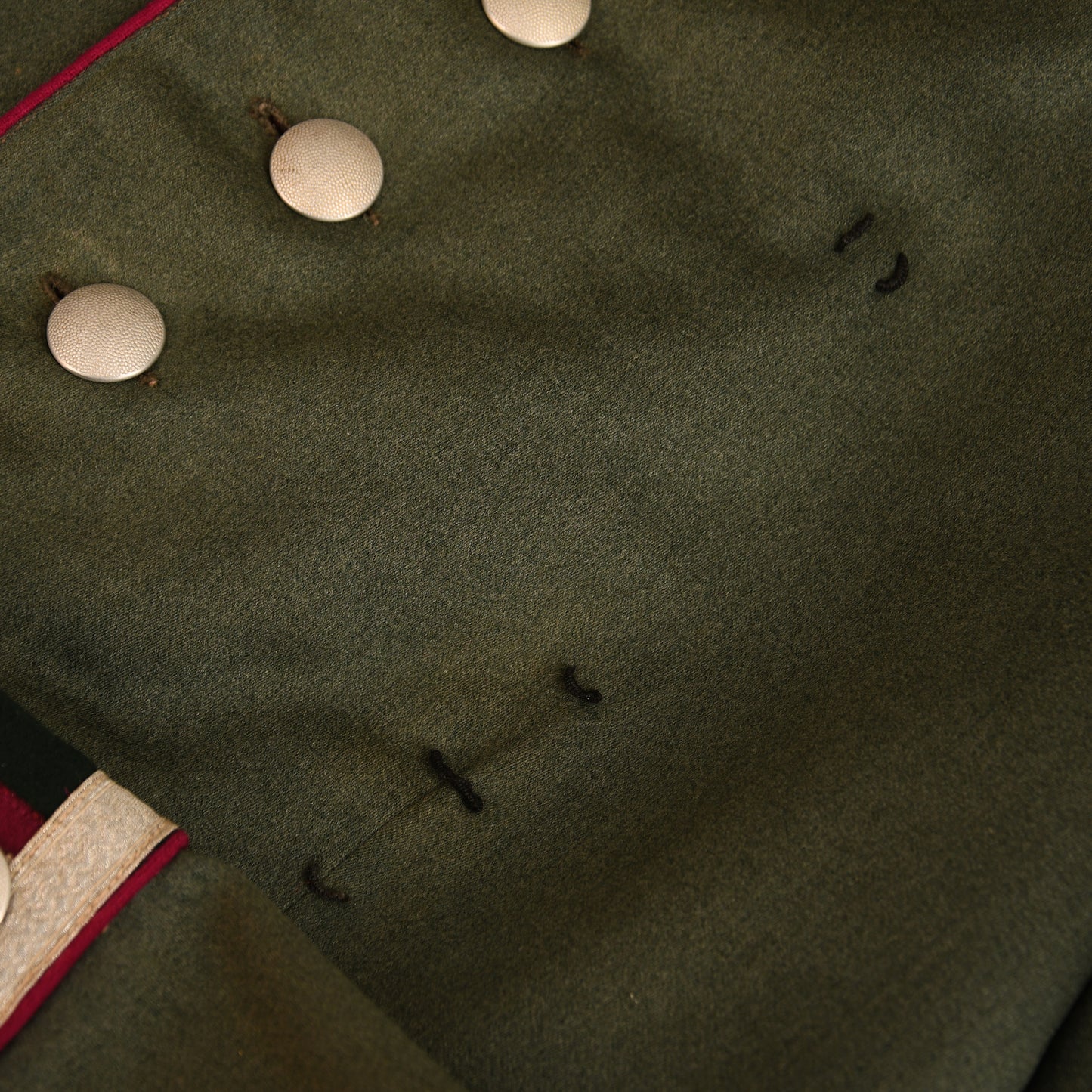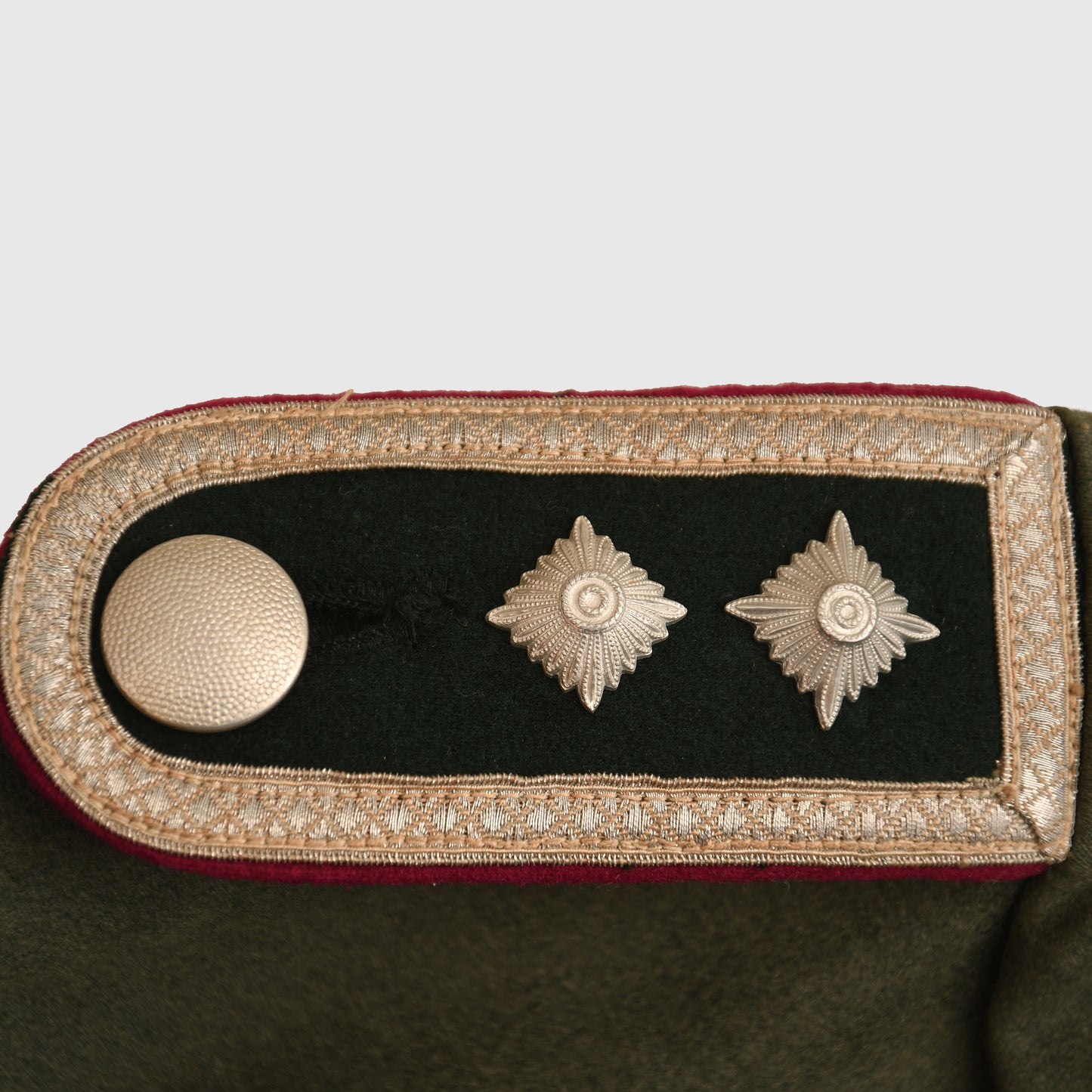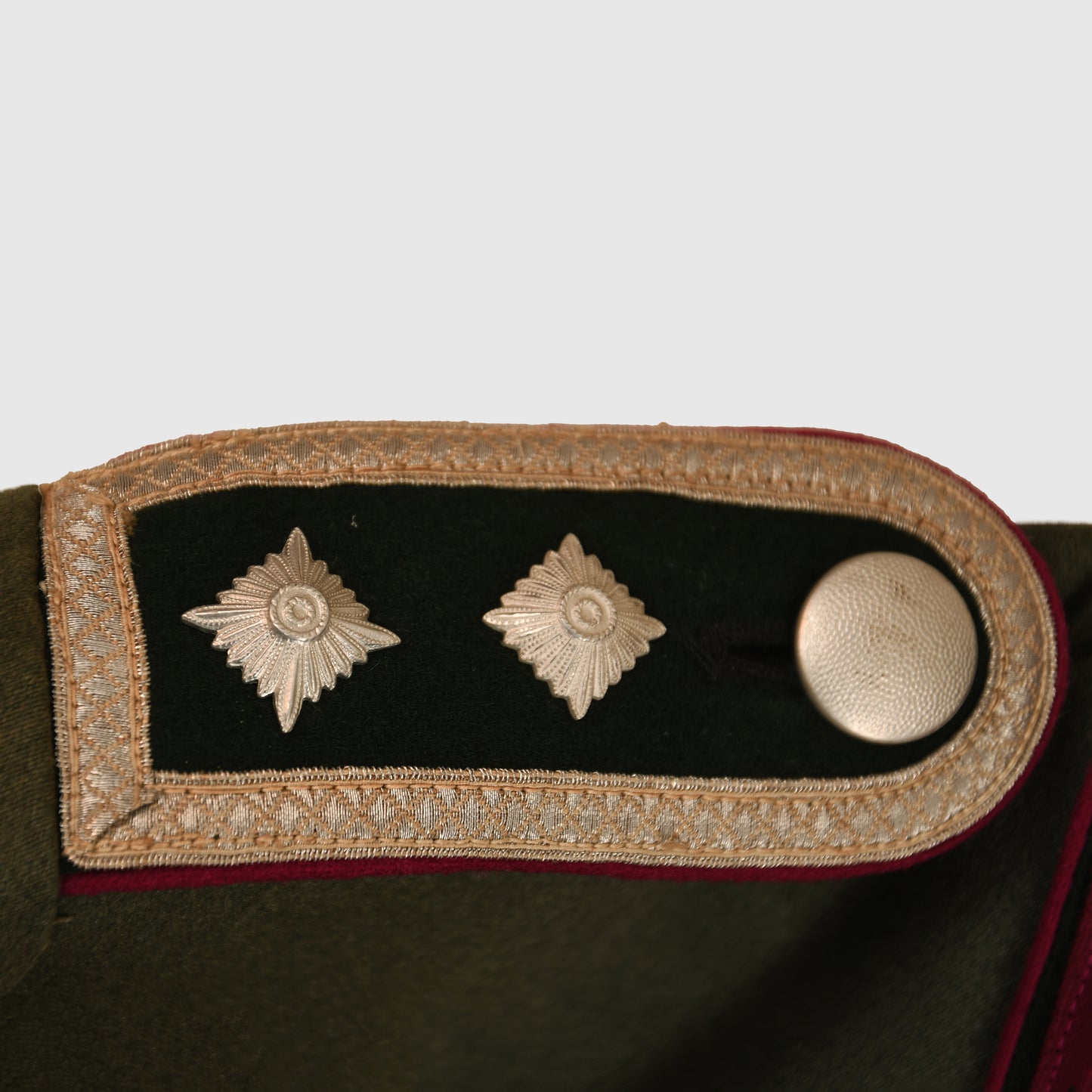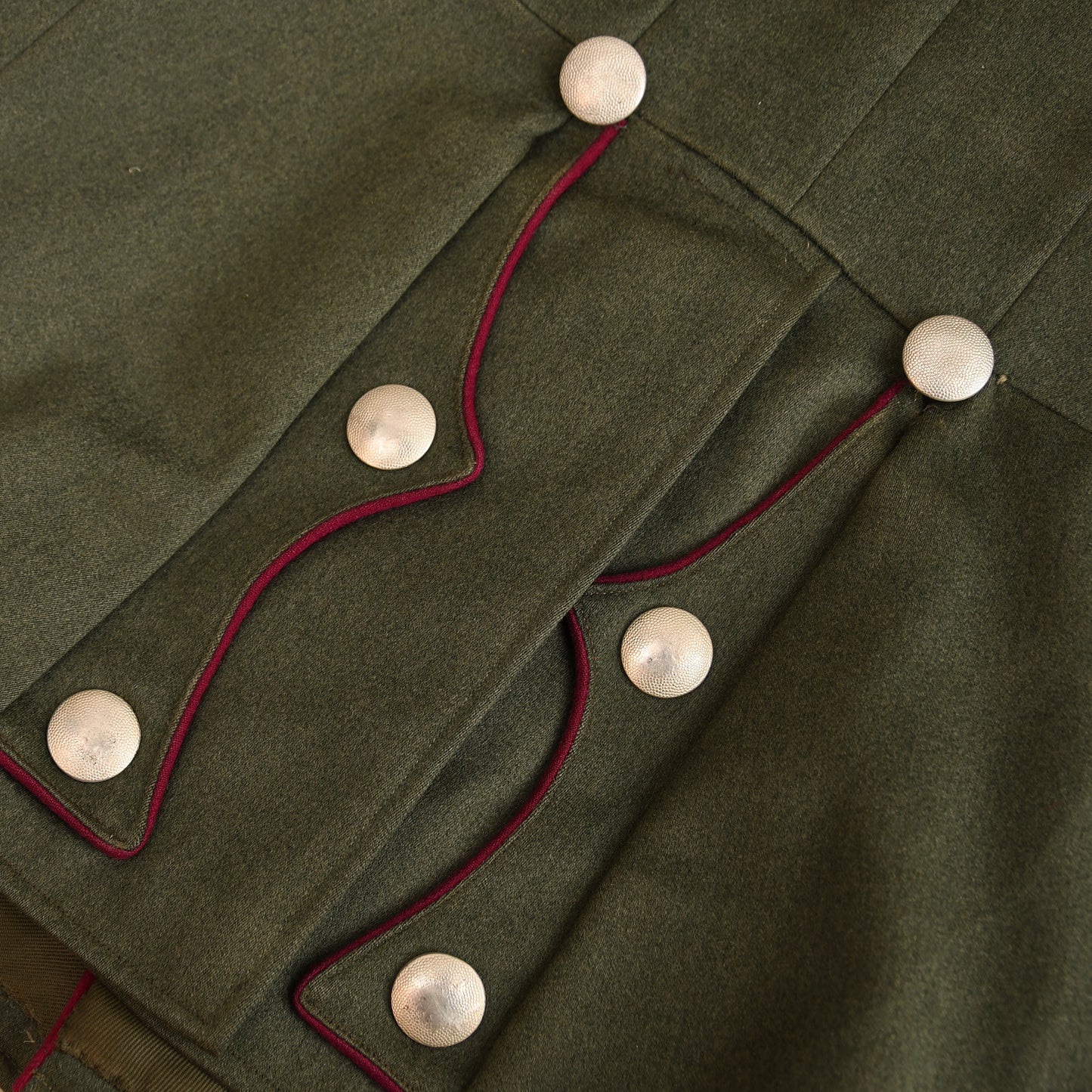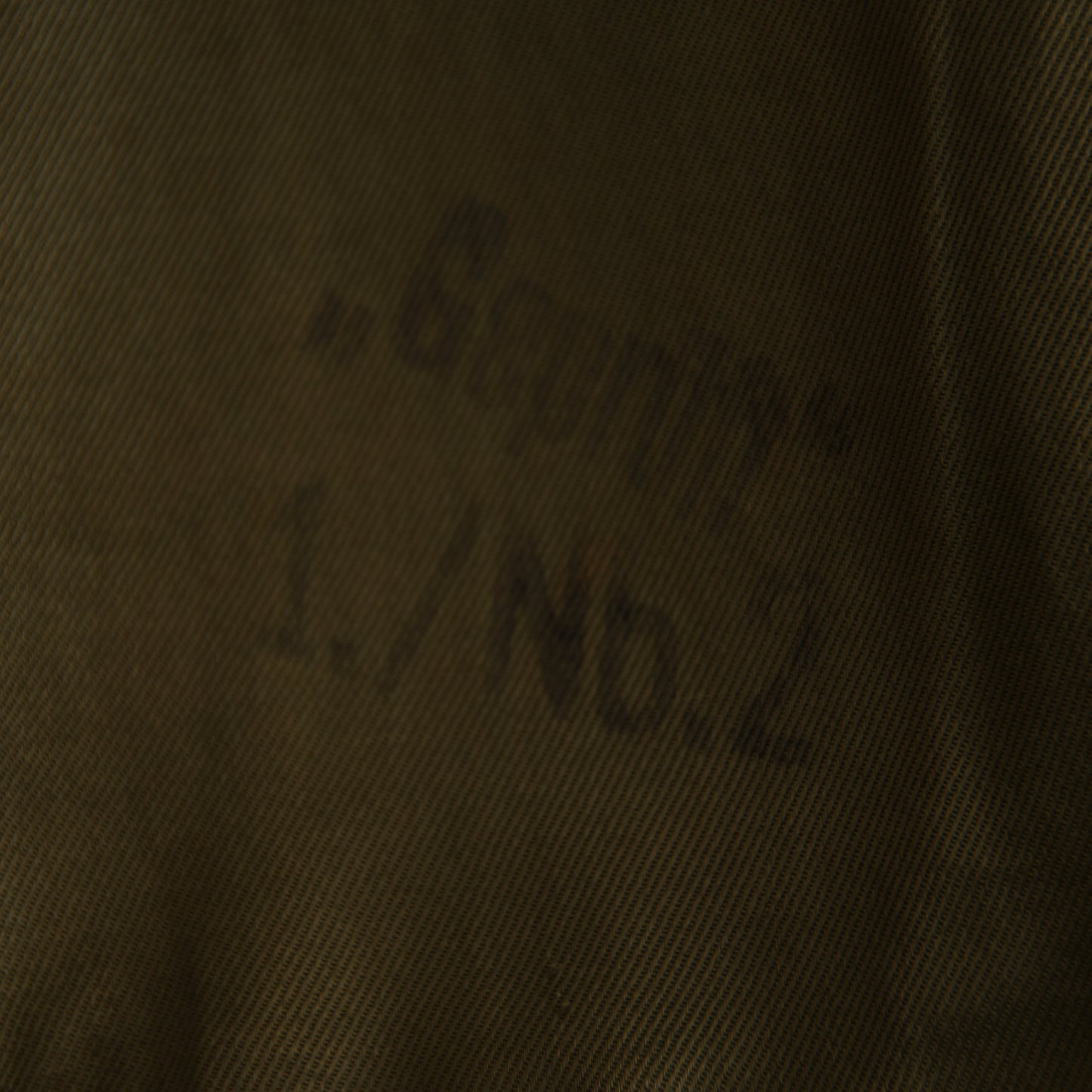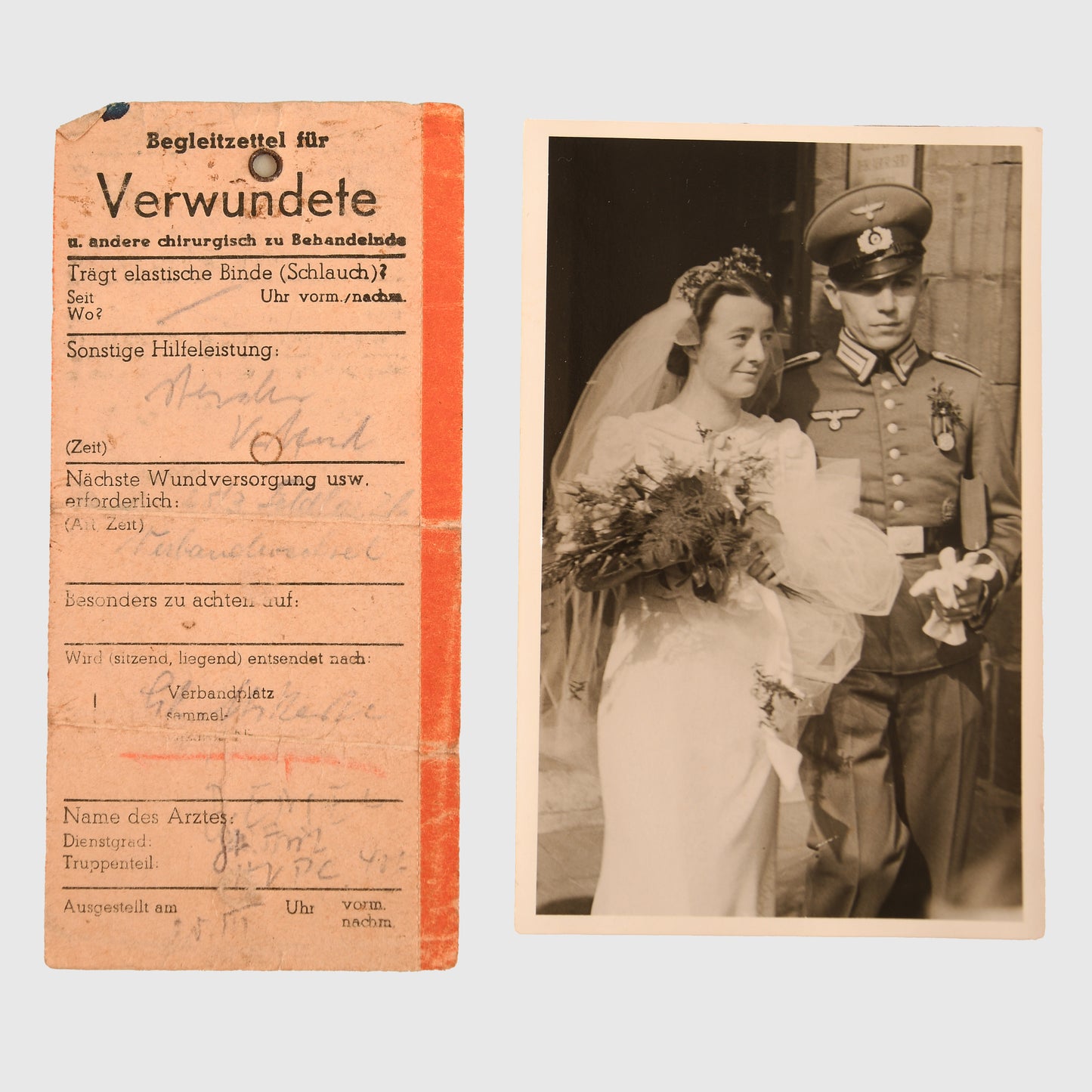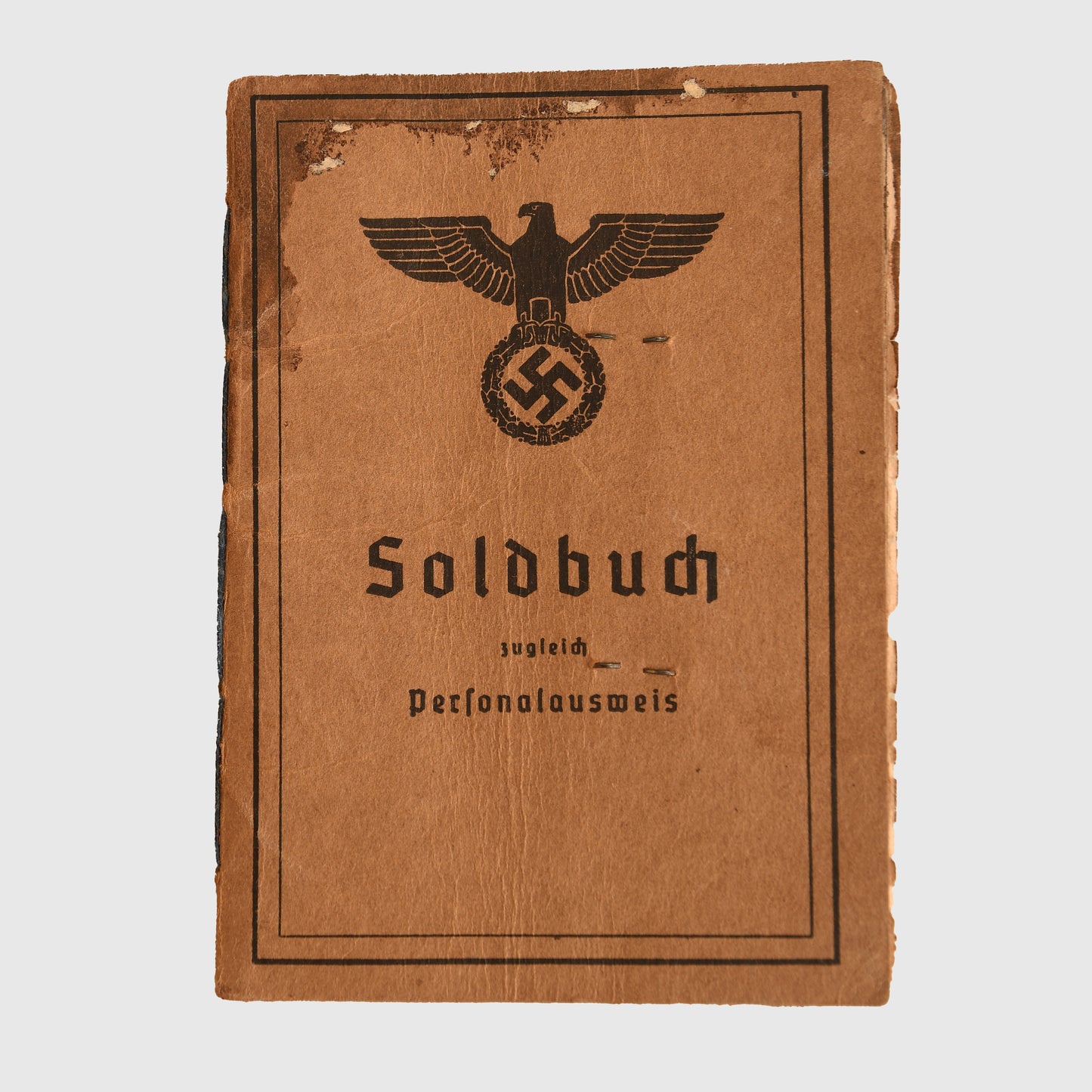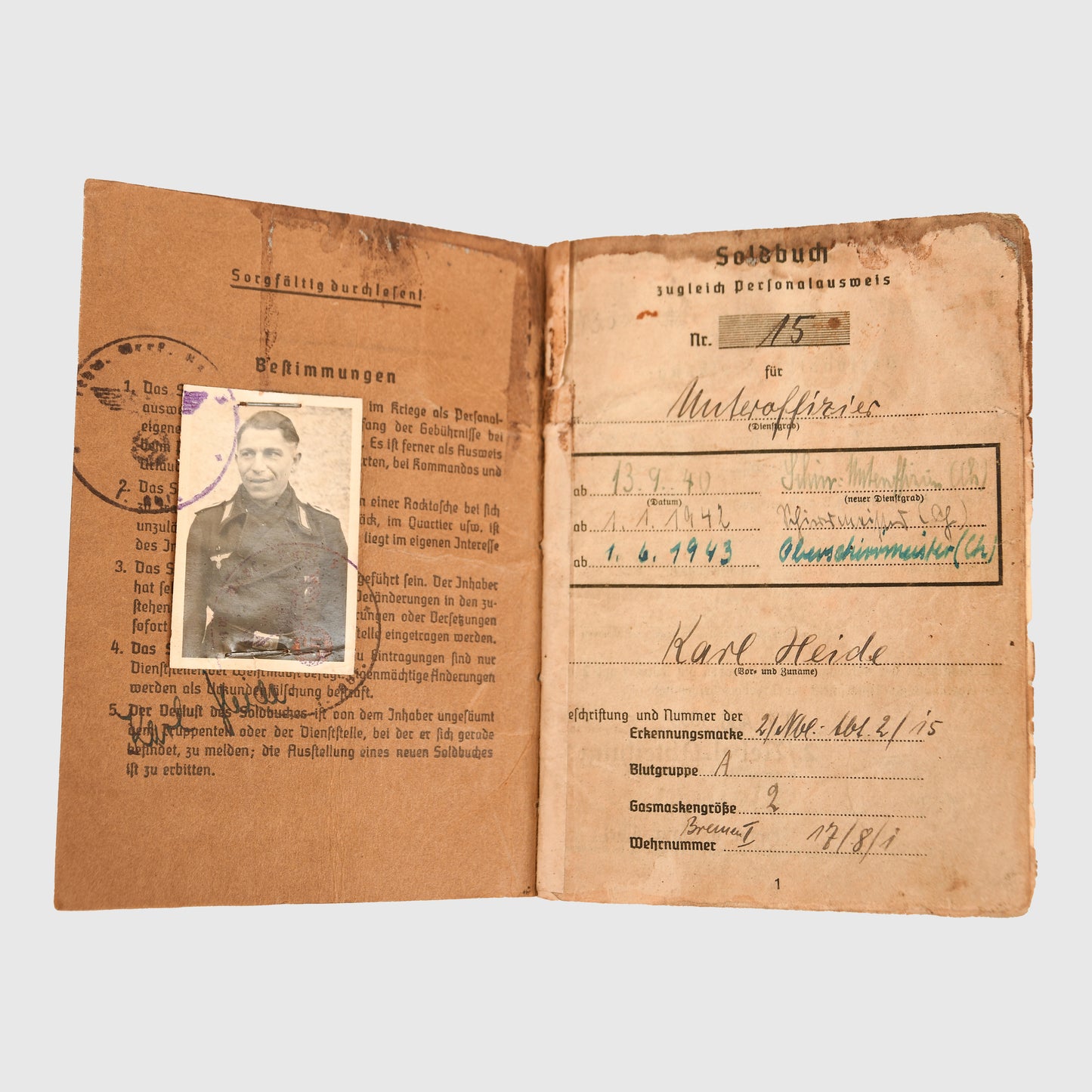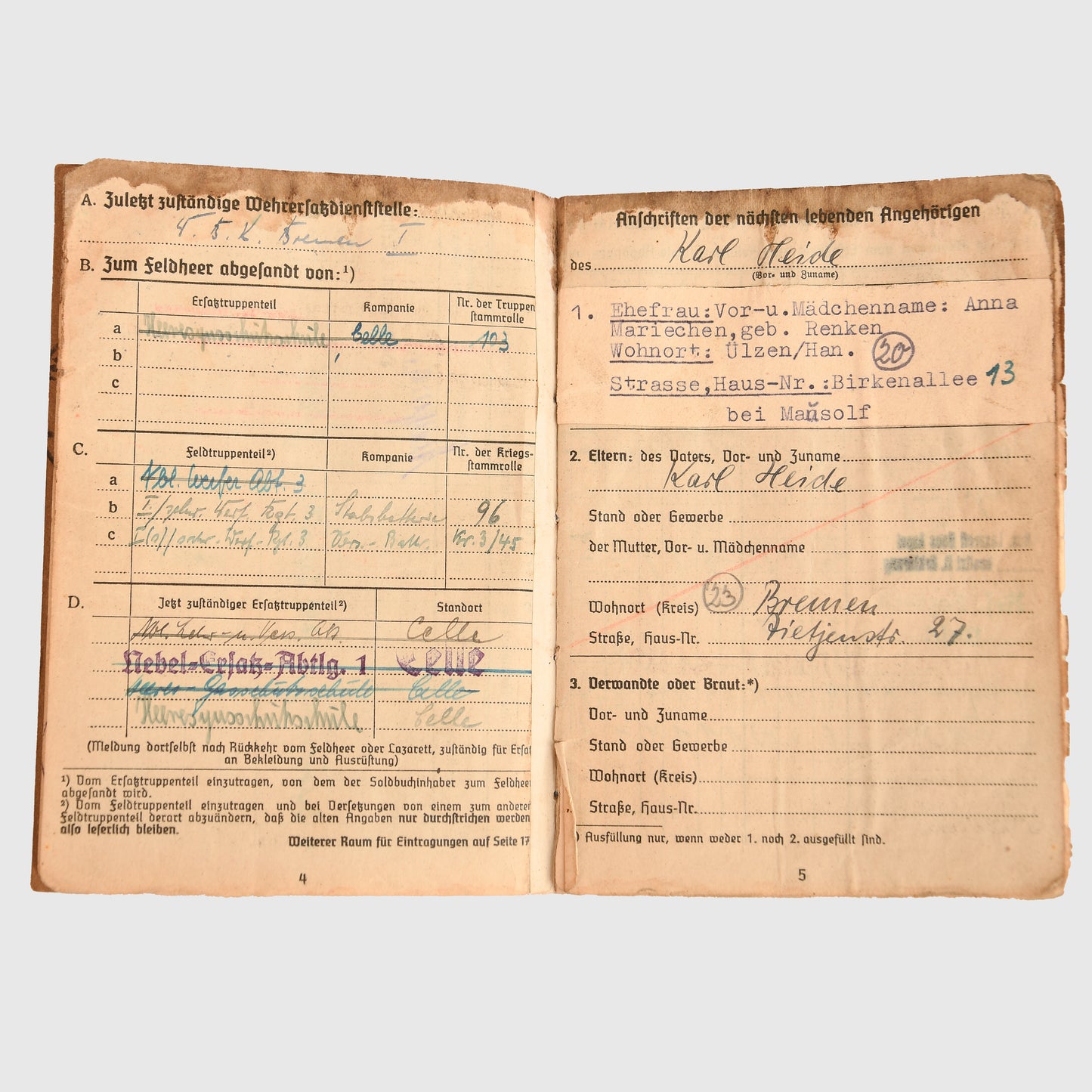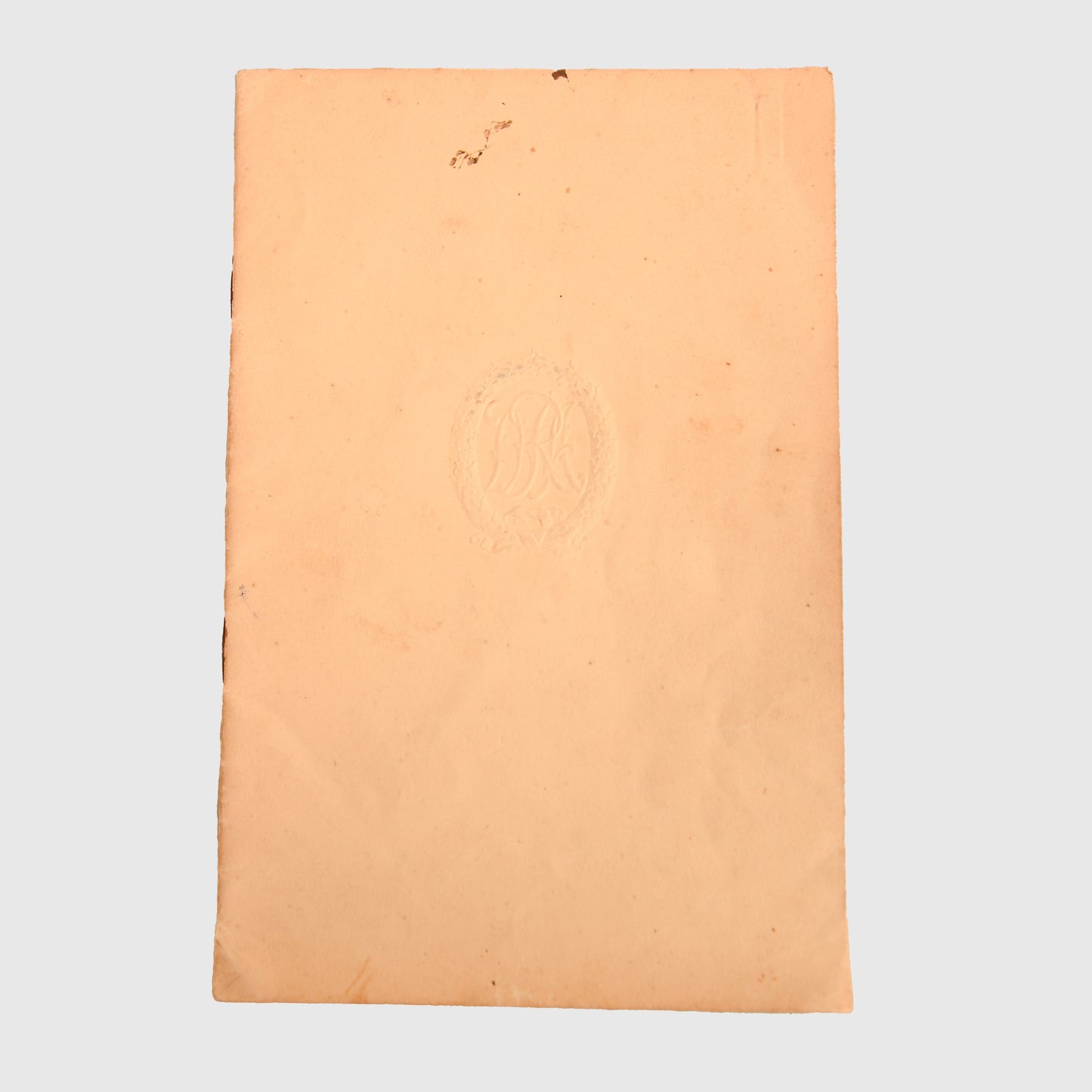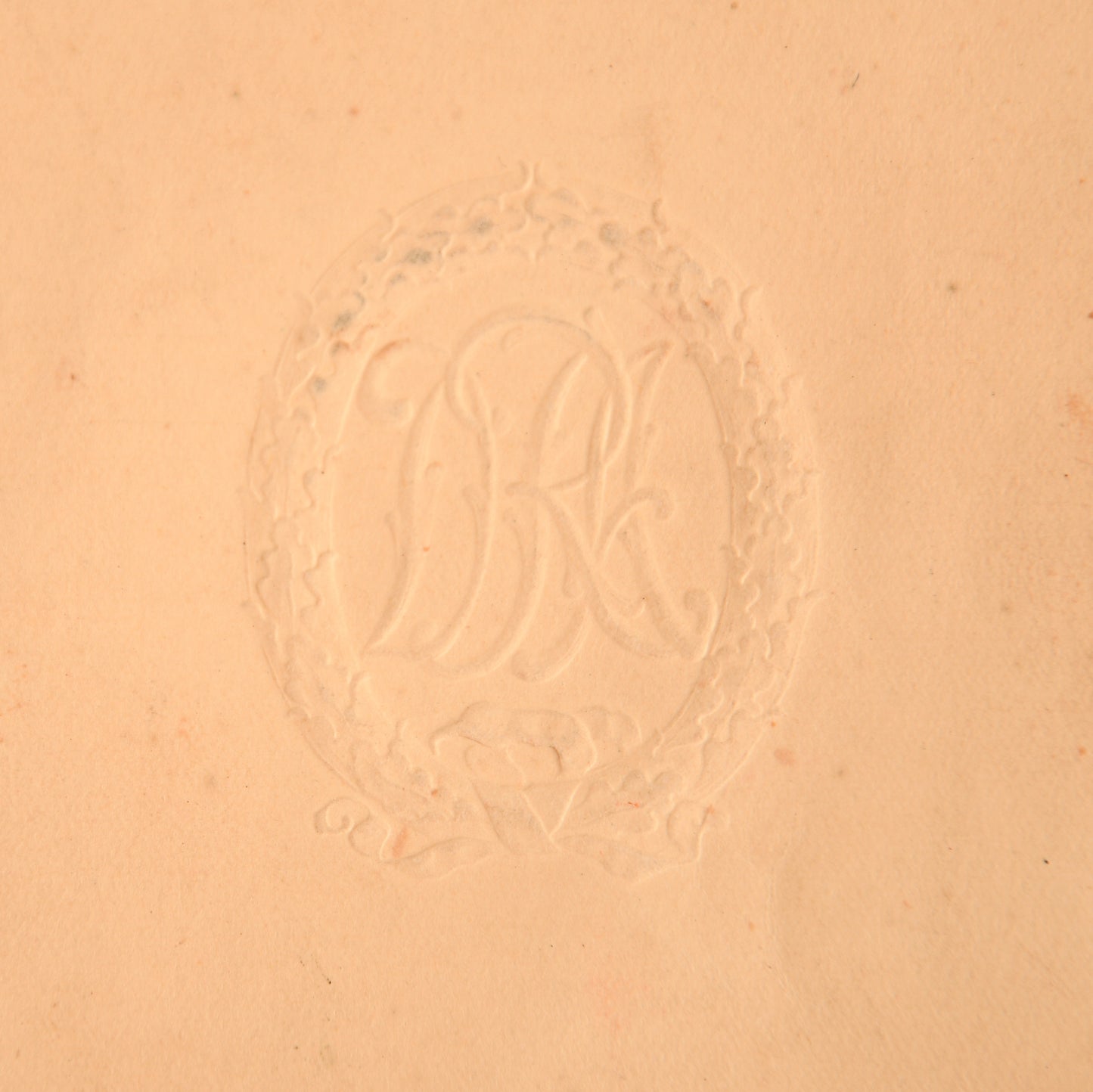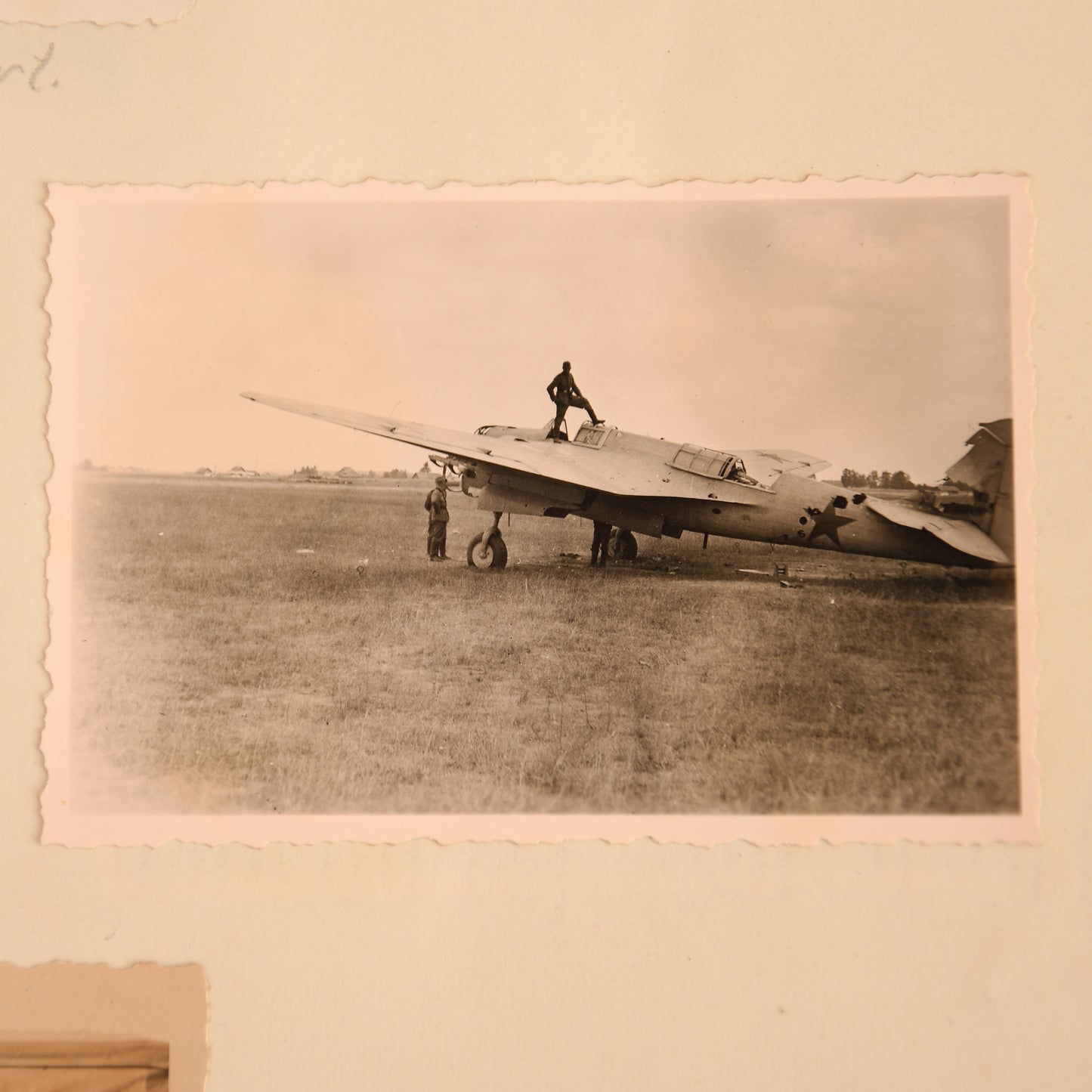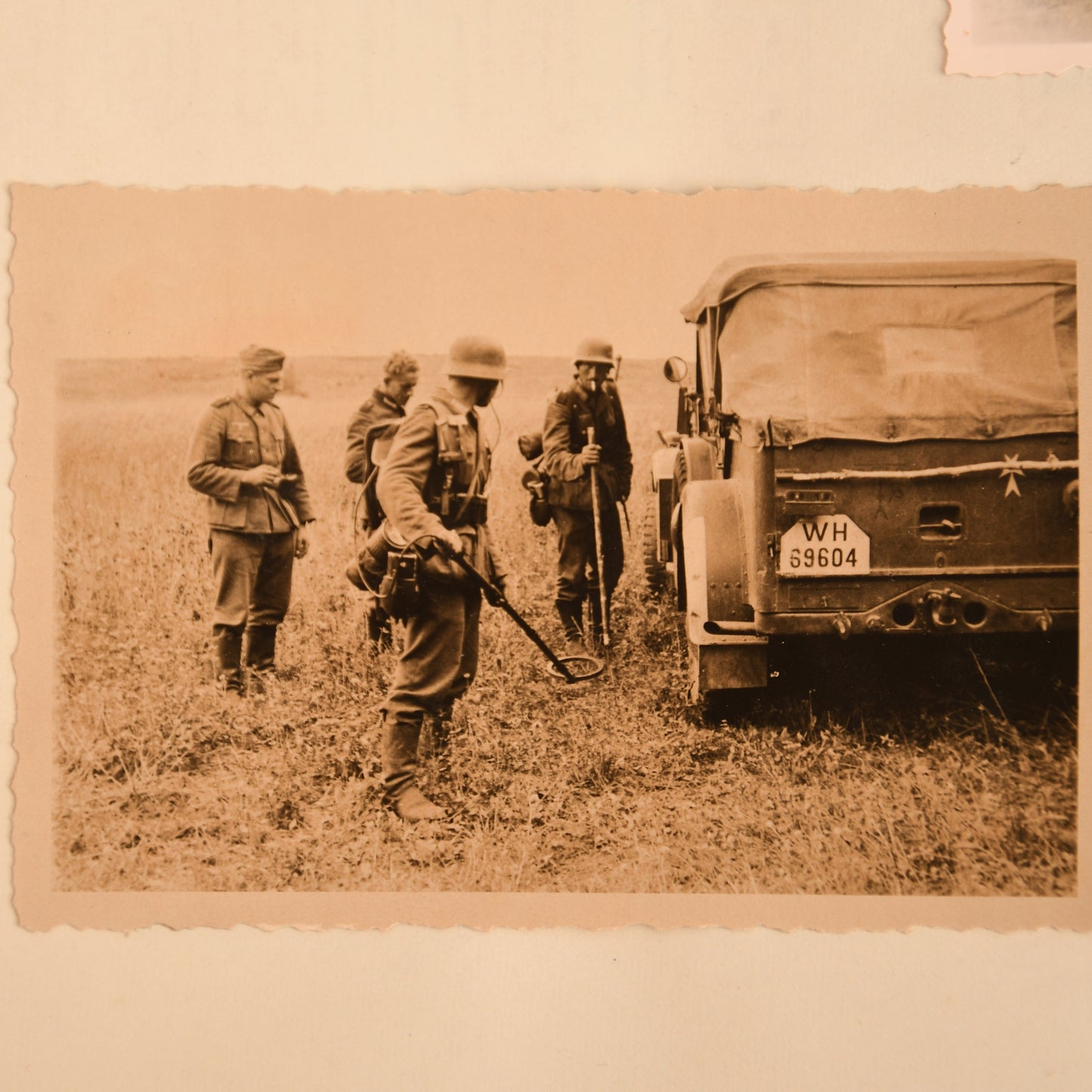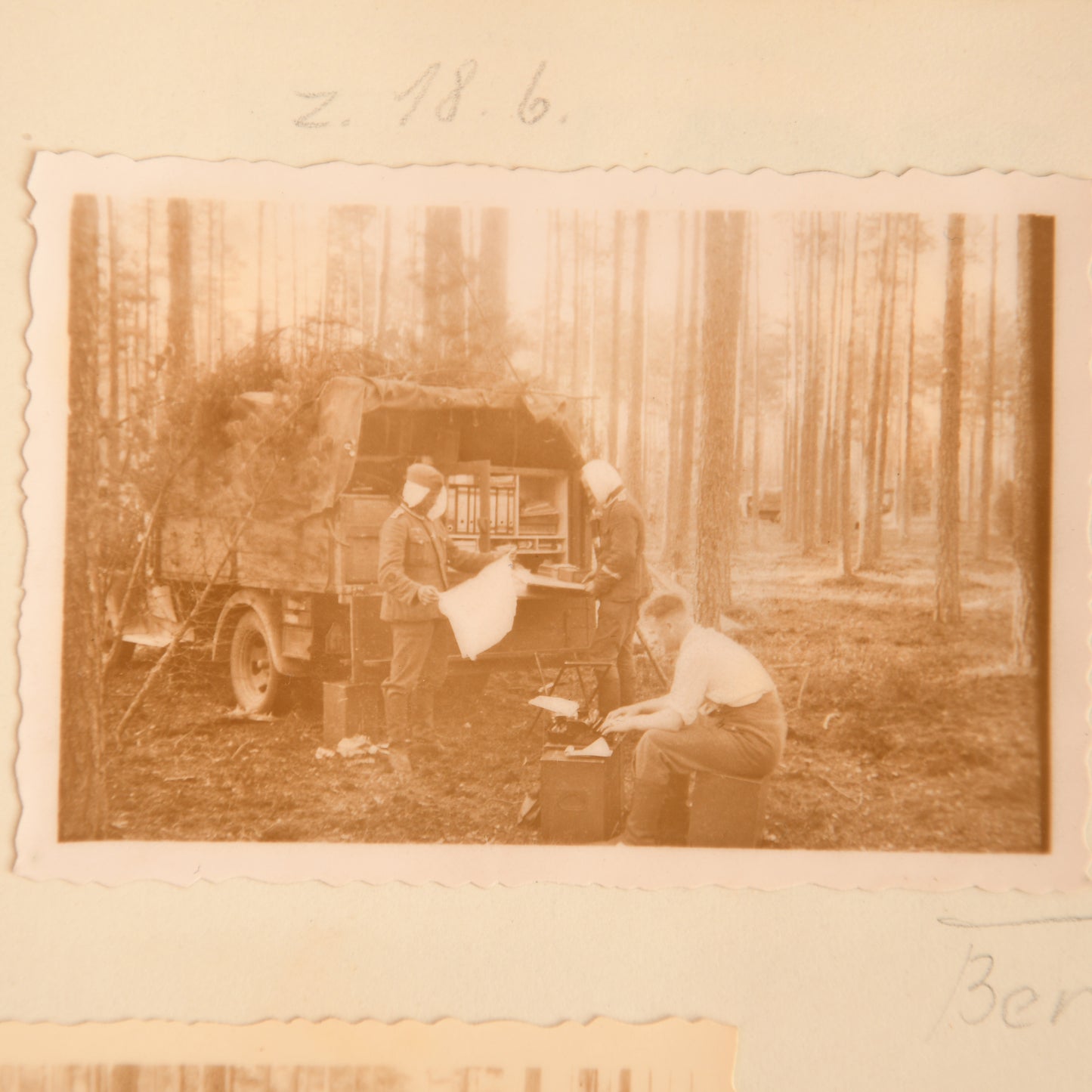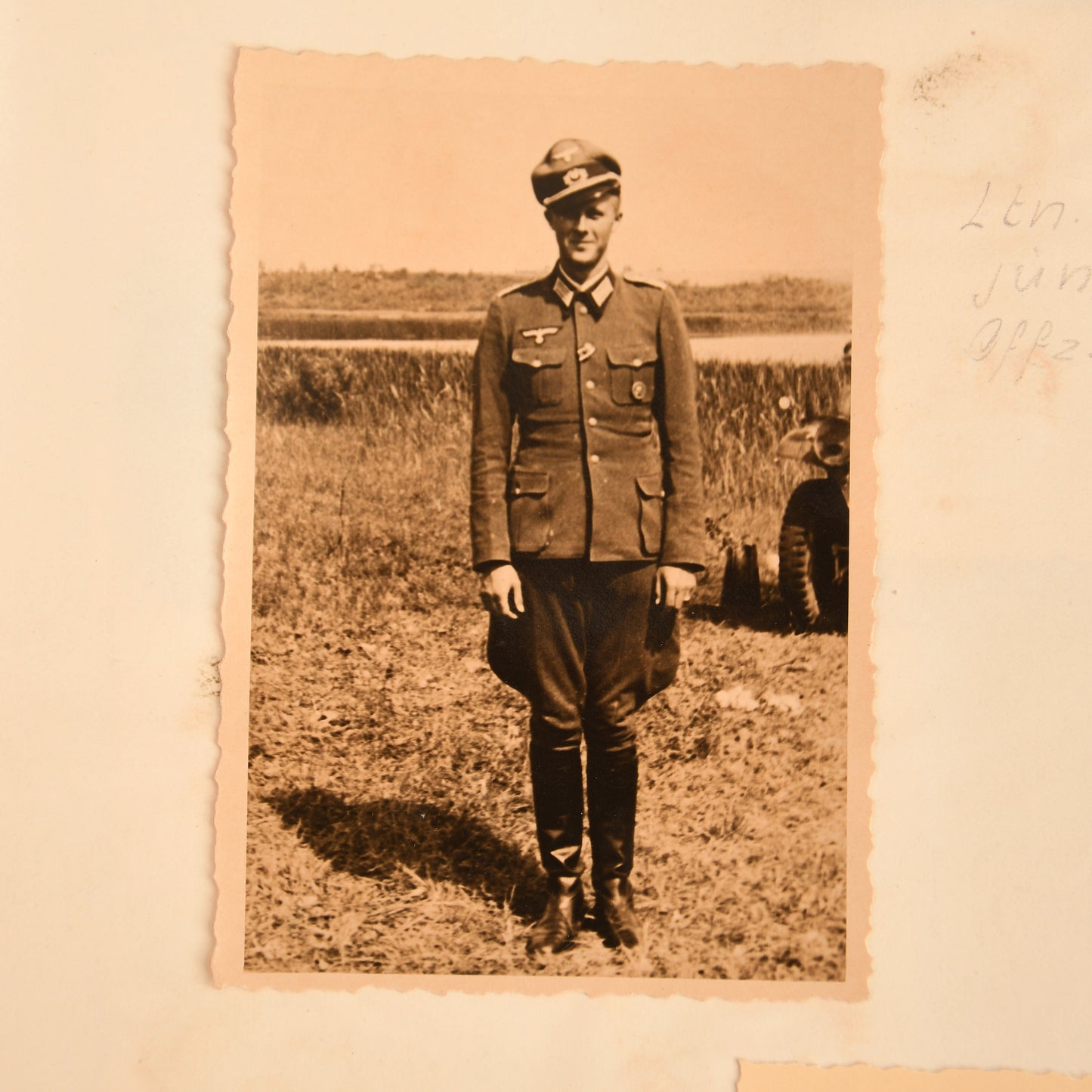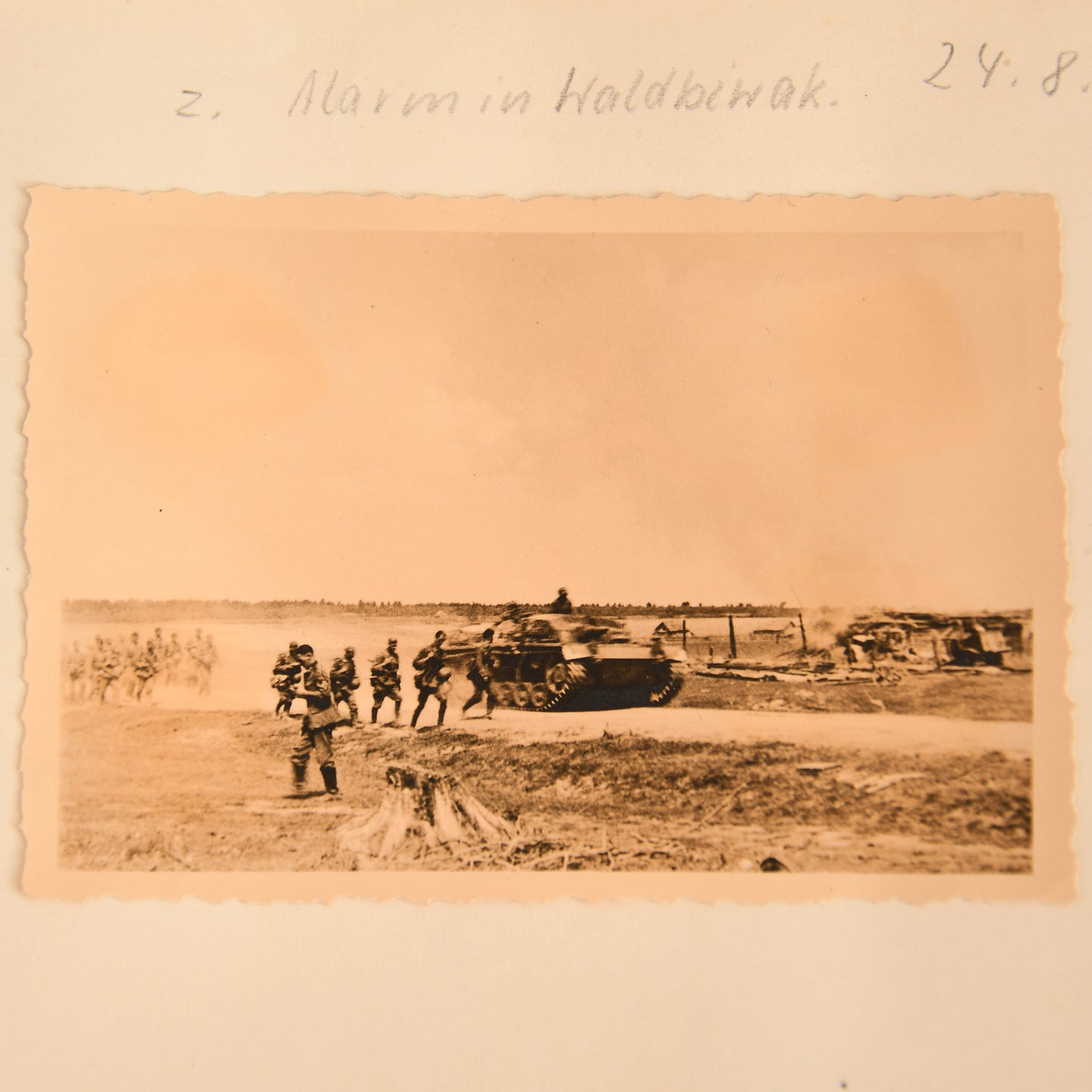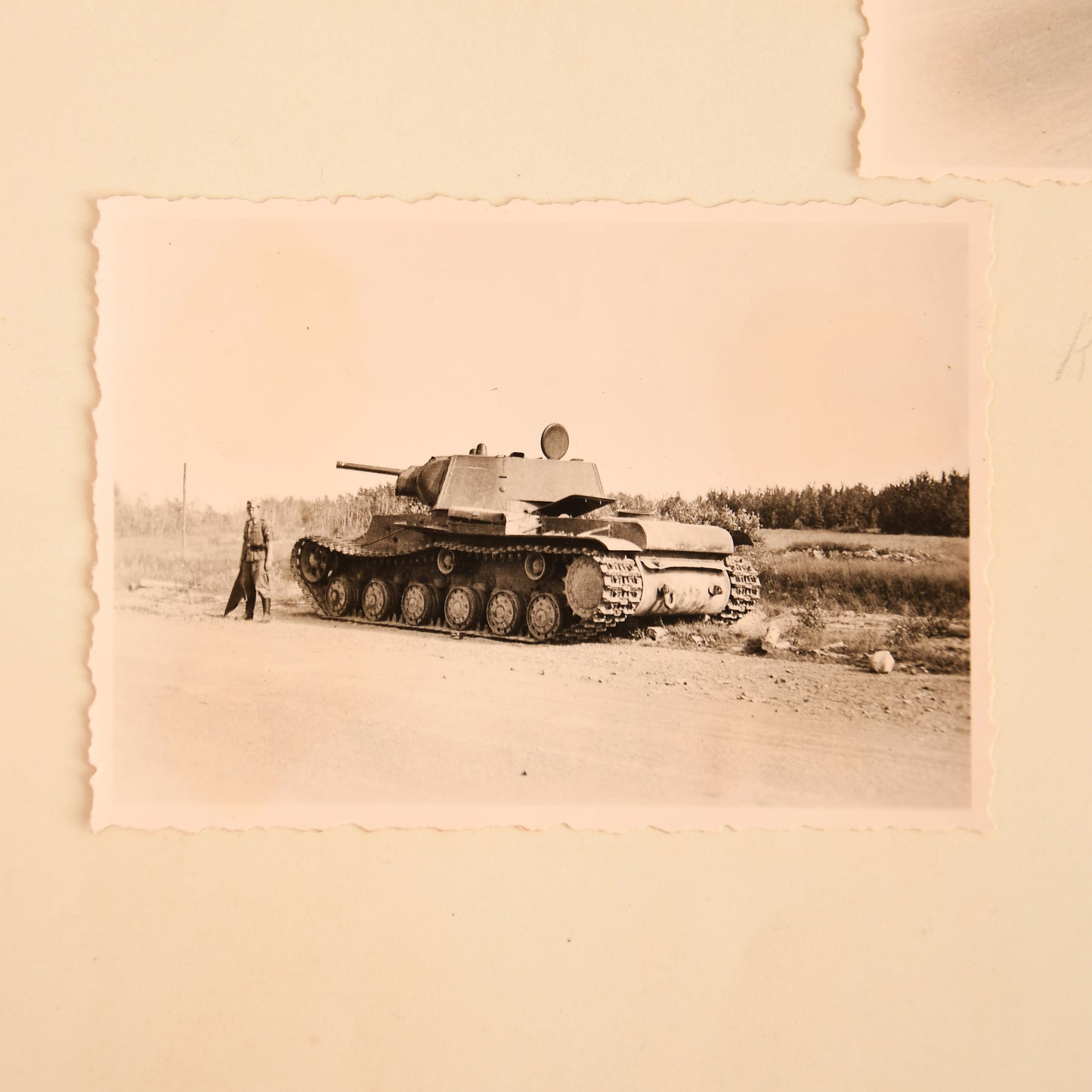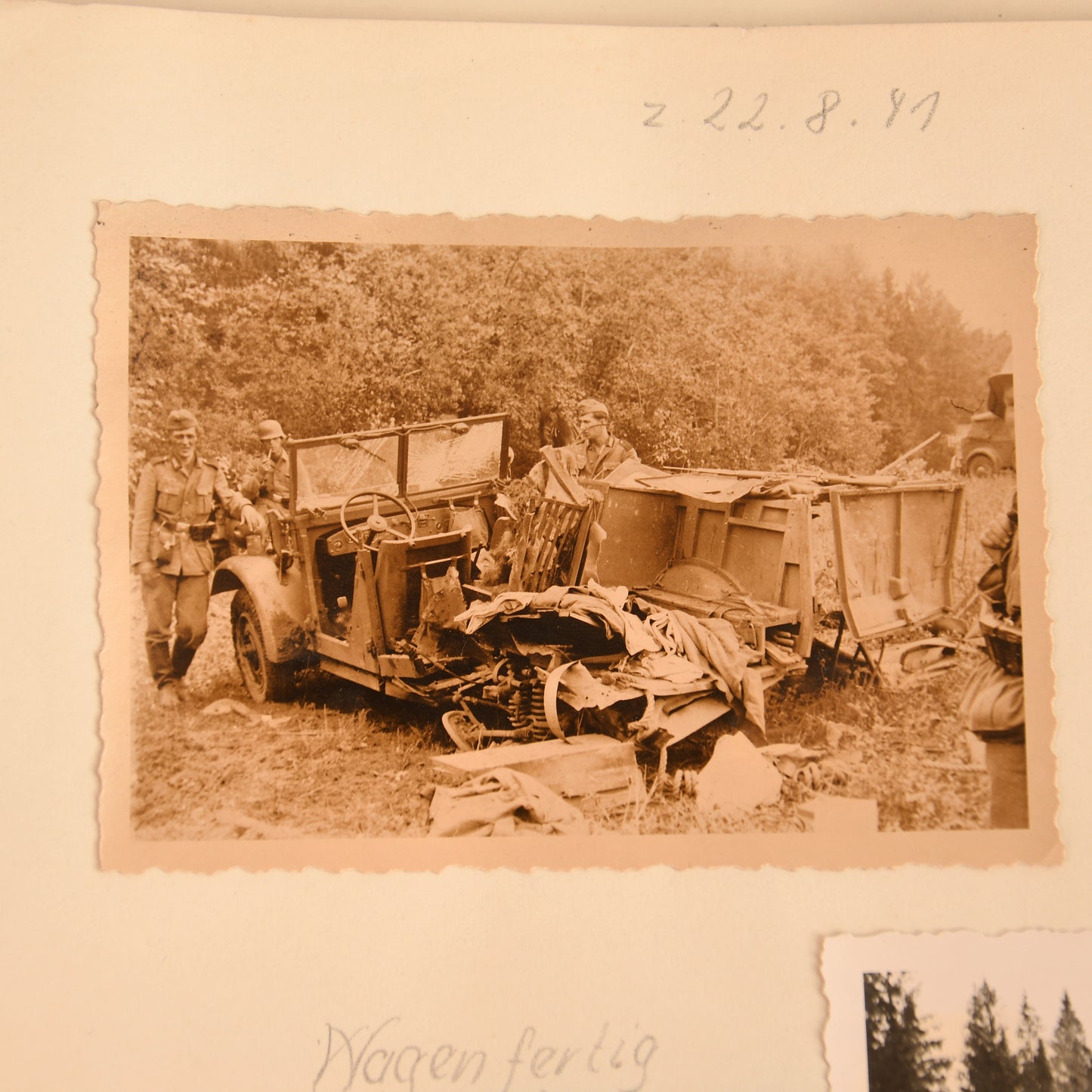Regimentals Militaria Museum
German WWII Chemical Warfare Troops Parade Tunic and Document Grouping
German WWII Chemical Warfare Troops Parade Tunic and Document Grouping
Couldn't load pickup availability
A superb and exceptionally rare grouping, recently acquired directly from the family of the original owner. This set has never before passed through the hands of dealers or collectors and represents an untouched, historically rich ensemble belonging to a member of the German Army’s chemical warfare branch (Nebeltruppen).
The grouping centres around a standard Army parade tunic featuring the highly sought-after chemical warfare troops' waffenfarbe. The distinctive piping in chemical troops’ coloration runs along the shoulder boards, full collar edges, front closure, turn-back cuffs, collar patch underlays, cuff ornaments, and the Prussian-style rear skirt. The tunic is free from moth damage and features insignia for the rank of Oberfeldwebel, including silver lace to the collar, cuffs, and shoulder boards. All buttons are present, and the tunic is finished with an originally-applied bullion wire officer’s breast eagle. This eagle has been confirmed as original to the tunic, based on a period photograph of the owner—Karl Heide—wearing this very piece on his wedding day.
To the lower right sleeve is the rare smoke projector operator trade badge, showing an upright mortar round in white, encircled by a white leaf wreath on a dark blue-green background. On the lower left sleeve is a fine quality Schirrmeister patch—yellow embroidery on dark green with silver lace edging—indicating Heide's role as a motor transport NCO responsible for the unit’s vehicles.
There are loops for a short medal ribbon bar on the upper breast and two sets of loops on the lower right breast for medal awards. The tunic is unit-stamped inside the lining ‘1/NB.2’, matching the August 1939 unit entry of ‘2./Nebel Abteilung’ on page 2 of Heide’s original Soldbuch, which accompanies the tunic.
The Soldbuch, though slightly water-stained, is complete and features a uniform photograph of Karl Heide in a Panzer wrap tunic. It begins on 13th September 1940 and includes numerous entries reflecting his service in Nebeltruppe units. Page 8 notes his Schirrmeister trade, while page 21 records his awards: the Reich Sports Abzeichen and the Führergeschenk (a boxed care package sent to frontline soldiers in winter 1943).
Also included is:
A wedding day photograph of Heide wearing this exact tunic, showing the same eagle and shoulder boards as preserved today.
A large group RAD photograph with Heide present.
His Reich Sports Abzeichen award book.
A rare wound label, once pinned to his uniform during evacuation, identifying service in 1/Nebeltruppen Regiment 3.
Two original war diary pages covering 13–14 June 1941.
A collection of hand-drawn sketches and artwork by Heide.
Contemporary newspaper clippings on the fighting around Smolensk.
Four Soviet propaganda leaflets dropped to encourage surrender.
A selection of personal combat photographs, pasted to A4 sheets, annotated in pencil. These include images of:
Captured Russian tanks and prisoners
Russian village life
Smoke deployment operations
Destroyed Russian infrastructure
German field kitchens
Graves and bunkers
Tracked vehicles and combat engineering work
A particularly poignant image captioned “Leutnant Breymann – our bravest and best officer”
And an image of a vehicle struck by a mine, with the surviving driver standing beside it.
This is an outstanding and historically significant grouping, offering deep insight into the personal experience and specialized service of a German chemical warfare NCO on the Eastern Front. The combination of a rare branch-specific parade tunic, full documentation, original photographs, and frontline ephemera make this a museum-grade ensemble.
Ref; 93665
